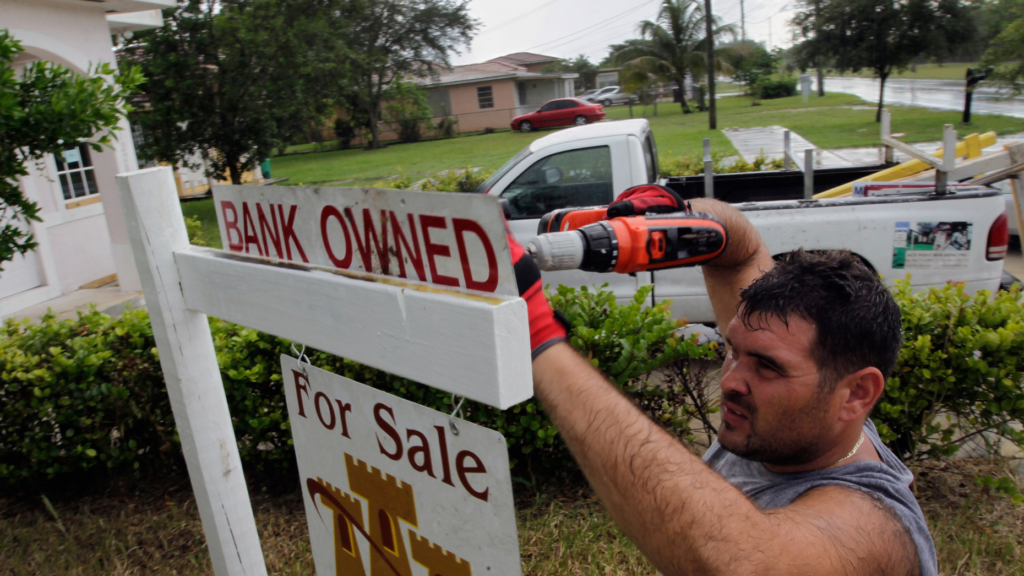The number of homes with foreclosure filings rose 29 percent in January as lenders took advantage of expiring federal restrictions, according to new data from Attom Data Solutions
Foreclosures picked up the pace in January after lenders emerged from a holiday slowdown and the federal government ended more restrictions on mortgage servicers.
More than 23,000 properties had foreclosure filings in January, a 29 percent increase from the previous month and well over double the number from the same time last year, according to the latest report from Attom Data Solutions.
These foreclosure filings included default notices, scheduled auctions or bank repossessions.
The increase to begin the year didn’t come as a surprise to RealtyTrac Executive Vice President Rick Sharga.
“Foreclosures typically slow down during the holidays in November and December and pick back up after the first of the year,” said Sharga, whose company is owned by Attom. “This year, the increases were probably a little more dramatic than usual since foreclosure restrictions placed on mortgage servicers by the CFPB expired at the end of December.”
The Consumer Financial Protection Bureau kept these rules in place from September through the end of December in an effort to prevent certain “avoidable foreclosures” after the COVID-19 moratorium ended earlier last year.
These rules kept mortgage services from initiating new foreclosures or completing a repossession on certain types of “federally-related” mortgages for which the home was the owner’s primary residence.
But while these protections bought extra time for some distressed borrowers, their expiration has since opened the door for a new wave of filings and repossessions.
The number of actual foreclosure repossessions, while far below a normal level, was on a steep upward trajectory.
Repossessions rose 57 percent from December to January, and amounted to 4,784 completed foreclosures. That’s more than 3.3 times as many as the same time last year, when state and federal governments had banned many types of eviction and foreclosure.
The month-to-month increase in repossessions was most pronounced in Texas, Georgia and Michigan. All three of these states saw at least double the number of completed foreclosures in January than they did the previous month, with Michigan recording repossession numbers nearly seven times as high.
Tennessee and Alabama each saw a monthly rise in repossessions of roughly 50 percent.
Lenders began the foreclosure process on 11,854 properties in January.
Taken in total, the number of properties with foreclosure filings amounted to 1 in 5,922 housing units in January. But some states were more affected than others.
That share of homes with a foreclosure filing was more than double the national share in New Jersey and Illinois. Nevada, Michigan and Ohio followed close behind, with the share of housing units going through the foreclosure process nearly twice the U.S. level.
And distressed homeowners in some metro areas were hit even harder.
Roughly 1 in every 1,547 housing units in Detroit had a foreclosure filing — nearly four times the national share. Similar numbers were recorded in Atlantic City, New Jersey. Following close behind were the metro areas of Cleveland; Columbia, South Carolina; and Trenton, New Jersey.
While these numbers are elevated from their levels during the pandemic, when a host of protections for borrowers were in place, they remain historically quite low, Sharga said in the report. Foreclosure completions remain less than half of where they were in January 2020, before the pandemic was declared and these protections were put in place, he said.
“We’re likely to continue seeing large year-over-year percentage increases for the rest of this year, but it’s also likely that foreclosure activity will remain below historically normal levels until the end of 2022,” Sharga said in the report.



 Are You Interested in West Eleventh Residences Miami?
Are You Interested in West Eleventh Residences Miami? Are You Interested in ONE Park Tower by Turnberry?
Are You Interested in ONE Park Tower by Turnberry? Are You Interested in Diesel Wynwood Condominium?
Are You Interested in Diesel Wynwood Condominium? Are You Interested in Five Park Miami Beach?
Are You Interested in Five Park Miami Beach? Are You Interested in Cipriani Residences Miami?
Are You Interested in Cipriani Residences Miami? Are You Interested in Bentley Residences Miami?
Are You Interested in Bentley Residences Miami? Are You Interested in Baccarat Residences Brickell?
Are You Interested in Baccarat Residences Brickell? Are You Interested in Aria Reserve Miami?
Are You Interested in Aria Reserve Miami? Are You Interested in 888 Brickell Dolce & Gabbana | Miami?
Are You Interested in 888 Brickell Dolce & Gabbana | Miami? Are You Interested in 600 Miami WorldCenter?
Are You Interested in 600 Miami WorldCenter? Are You Interested in HUB MIAMI RESIDENCES?
Are You Interested in HUB MIAMI RESIDENCES? Are You Interested in WALDORF ASTORIA RESIDENCES?
Are You Interested in WALDORF ASTORIA RESIDENCES?